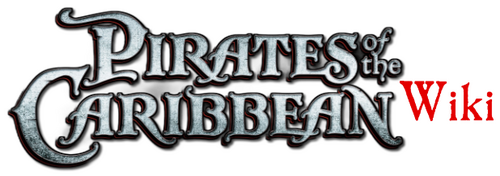| Line 17: | Line 17: | ||
== Notable privateers == |
== Notable privateers == |
||
| − | [[File:Henry Morgan.gif|thumb| |
+ | [[File:Henry Morgan.gif|thumb|235px|[[Sir]] [[Henry Morgan]], the most notorious privateer of the 17th century]] |
Note most pirates were originaly privateers. |
Note most pirates were originaly privateers. |
||
*[[Henry Morgan]] (on behalf of [[England]] [1663-1671]) |
*[[Henry Morgan]] (on behalf of [[England]] [1663-1671]) |
||
Revision as of 16:37, 24 April 2011
 |

Hector Barbossa was a privateer of the British Empire after the War against piracy
- "Full pardon, commission as a privateer on behalf of England and the East India Trading Company. As if I could be bought for such a low price."
- ―Jack Sparrow
A privateer is a man or a ship under contract to a government, allowing them to attack enemy ships during wartime. This contract, called Letter of Marque, meant that the government got a share of the profits in return for issuing it.
History
- "Are we not King's men?"
- ―Hector Barbossa to the crew of the HMS Providence
Under contract, privateers are allowed to attack enemy ships during wartime. This contract, called Letter of Marque meant that the government got a share of the profits in return for issuing it (usually one-fifth of the value of the captured ship and cargo).

Battle between French and Spanish privateers
These contracts were originally called "Letters of Marque and Reprisal" and issued directly by monarchs and governments, but by the late 17th century they were issued by appointed government officials, and later by colonial governors.
Privateering is often described as a form of "legal" piracy. Strictly, a privateer was only entitled to attack enemy vessels during wartime. However, states often encouraged attacks on opposing powers while at peace, or on neutral vessel during time of war, blurring the line between privateering and piracy.
Many members of Jack Sparrow's original crew were privateers before peace-time saw the loss of their employment, forcing them to turn to piracy[1]. During his War against piracy, Lord Cutler Beckett attempted to employ Jack Sparrow as a privateer but his Letters of Marque were ultimately claimed by James Norrington[2]. Jack's longtime adversary, Hector Barbossa, was appointed as a privateer by King George II during the pirate's search for the Fountain of Youth[3].
Notable privateers

Sir Henry Morgan, the most notorious privateer of the 17th century
Note most pirates were originaly privateers.
- Henry Morgan (on behalf of England [1663-1671])
- Edward Teach (on behalf of England/Great Britain [1701-1714])
- Ammand the Corsair (on behalf of Ottoman Empire)
- Eduardo Villanueva (on behalf of Spain)
- Garcia de Avaracia (on behalf of Spain)
- Unnamed Spanish privateer (on behalf of Spain)
- Pierre le Porc (on behalf of France)
- Hector Barbossa (on behalf of Great Britain [1750])
Behind the scenes
- In Pirates of the Caribbean Online there are several items named after privateers. A Bayonet, a Sea Globe, a Cutlass, and a voodoo Doll.
